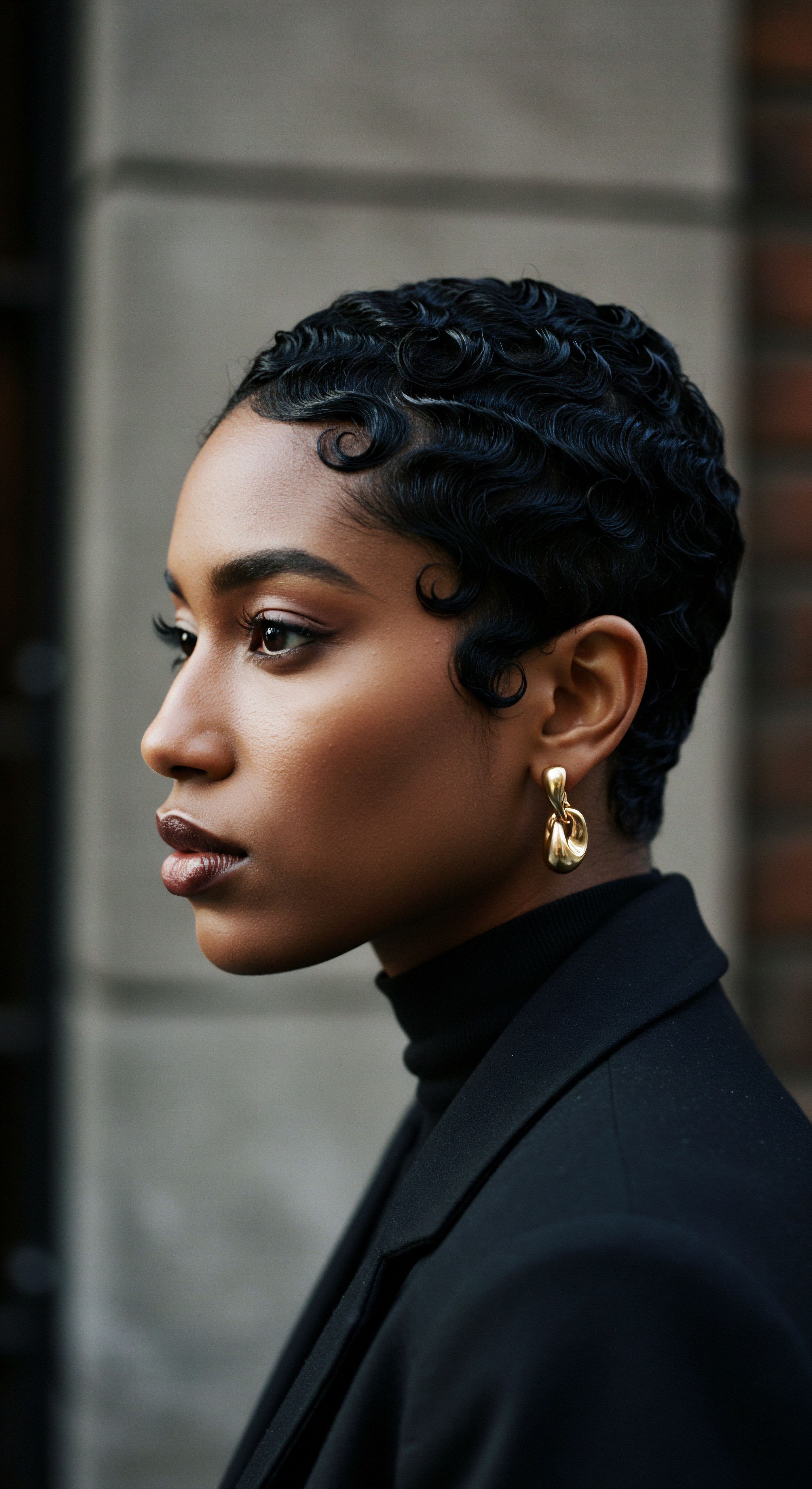
Roots
The silent question that often arises when one considers the intricate dance of coils, kinks, and waves upon the head is how best to tend to their delicate strength. For those with textured hair, this query carries a particular weight, resonating with generations of inherited practices and individual discoveries. It asks not merely about superficial gloss, but about the profound connection between daily rituals and the very resilience of each strand.
Can product choices truly reduce mechanical stress on textured hair? This inquiry invites us to peer beneath the surface, to consider the fundamental architecture of hair itself, and to appreciate the profound relationship between our choices and the enduring vitality of our crowns.

Hair Anatomy and Physiology Specific to Textured Hair
At its very core, hair is a complex protein filament, primarily composed of keratin. Yet, the experience of hair differs vastly across individuals, largely influenced by the unique structure of the hair follicle. For textured hair, the follicle often possesses an elliptical or oval cross-section, rather than the more circular shape found in straight hair. This distinctive shape, along with the retrocurvature of the hair follicle, gives rise to the characteristic bends, twists, and coils that define textured strands.
These structural variations mean that textured hair, by its very nature, exhibits a different mechanical profile. The tightly coiled structure creates inherent points of vulnerability where the strand bends sharply, making it more prone to tangling and subsequent breakage during daily handling. The cuticle, the outermost protective layer of the hair shaft, consisting of overlapping flat cells, can be slightly lifted at these points of curvature, leaving the inner cortex more exposed to external elements and mechanical forces. This exposure can lead to increased friction between individual strands, further contributing to mechanical stress during activities like detangling or styling.
The inherent structure of textured hair, with its unique follicular shape and natural bends, contributes to a distinct mechanical vulnerability.
Beyond its outward form, the internal composition also plays a role. While the fundamental proteins and amino acids are similar across hair types, the arrangement and distribution of these components can differ. Research indicates that the strength of curly hair is derived from two components ❉ the toe region (springiness) and the elastic region, with the toe region significantly contributing to overall strength, a characteristic less prominent in straight hair. This intrinsic springiness, while a source of beauty, also implies a specific response to tension and manipulation.
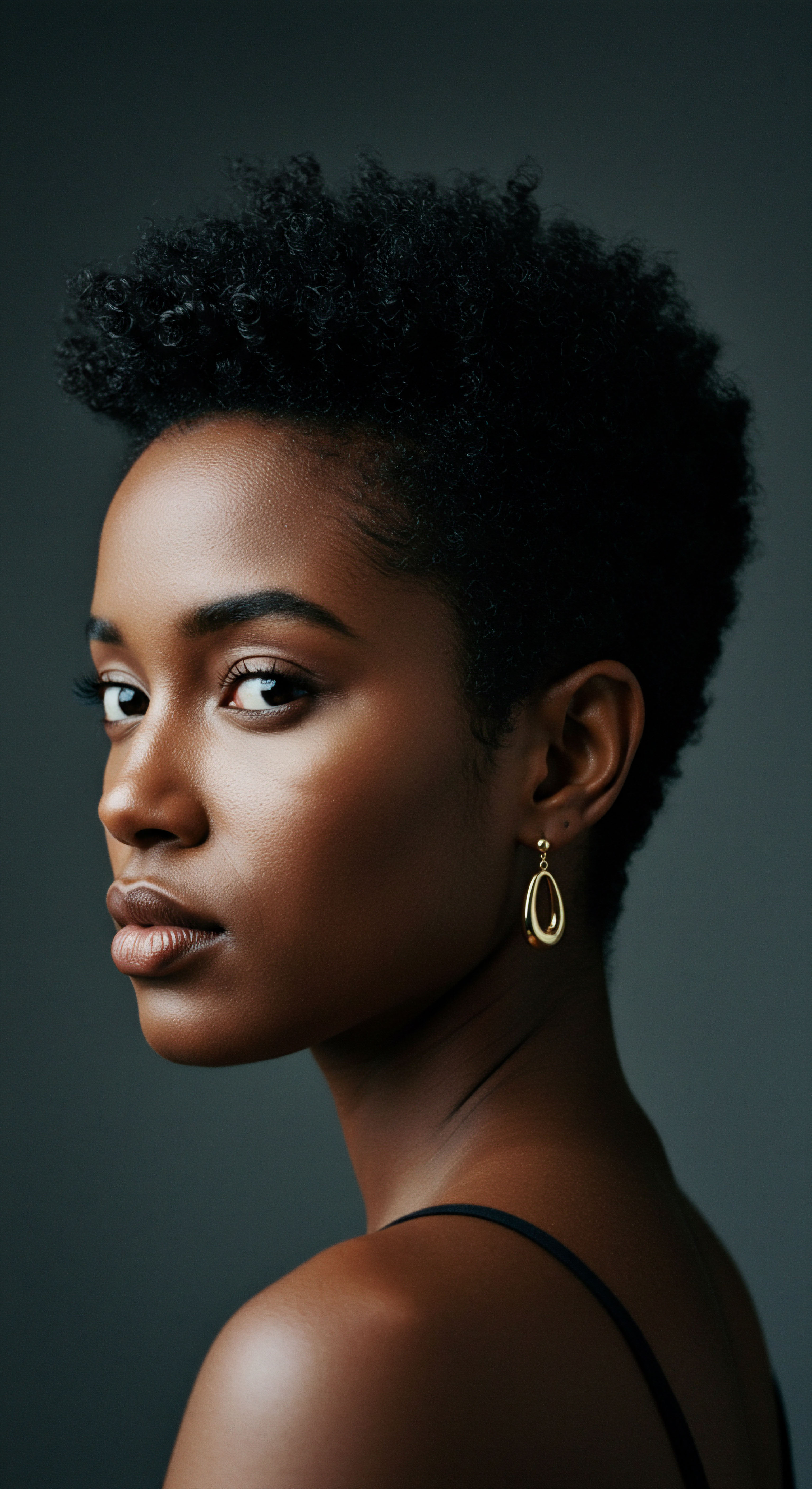
Textured Hair Classification Systems
For generations, individuals have sought ways to categorize and comprehend the diverse world of textured hair. Early systems, often qualitative, relied on visual observation. The Andrew Walker scale, a popular classification system, categorizes hair into types 1 (straight) through 4 (kinky/coily), with subcategories for varying degrees of waves, curls, and coils. While widely adopted, such systems sometimes rely on subjective assessment.
Modern scientific approaches aim for more quantitative characterization. Cosmetic scientists, for instance, employ systems that measure parameters such as curve diameter, curl index, number of waves, and number of twists to classify hair types with greater precision. This scientific lens provides a deeper appreciation for the geometric complexity of textured hair, moving beyond simple visual descriptions to a more data-driven understanding of its physical attributes.
| Approach Visual Systems |
| Description Categorization based on observable curl patterns and density. |
| Focus Ease of identification, broad styling guidance. |
| Approach Quantitative Scientific Systems |
| Description Measurement of specific geometric parameters like curl diameter and twist count. |
| Focus Precise characterization, product formulation guidance. |
| Approach Biomechanical Analysis |
| Description Assessment of hair fiber strength, elasticity, and response to force. |
| Focus Understanding inherent fragility and resilience. |

The Essential Lexicon of Textured Hair
A shared vocabulary helps us navigate the nuanced world of textured hair care. Terms such as Porosity, which refers to the hair’s ability to absorb and retain moisture, are central to understanding how products interact with the hair shaft. Hair with high porosity, for instance, has a more open cuticle layer, allowing moisture to enter and leave quickly, potentially leading to dryness and increased vulnerability to mechanical stress. Conversely, low porosity hair has a tightly closed cuticle, making it resistant to moisture absorption but also prone to product buildup.
Another key term is Elasticity, representing the hair’s capacity to stretch and return to its original state without breaking. Hair with good elasticity can withstand manipulation better, whereas hair lacking elasticity is more susceptible to snapping. Understanding these terms empowers individuals to select products and practices that truly align with their hair’s specific needs, rather than relying on generic solutions.
The vocabulary also includes terms describing the hair’s feel and appearance, such as Slip, which describes how easily fingers or a comb can glide through the hair, often improved by conditioning agents. A lack of slip can significantly contribute to mechanical damage during detangling.

Hair Growth Cycles and Influencing Factors
Hair growth is a continuous cycle, moving through distinct phases ❉ anagen (growth), catagen (transition), and telogen (resting). While product choices do not directly alter these inherent biological rhythms, external factors and daily practices certainly influence the health of new growth and the longevity of existing strands. Mechanical stress, especially repetitive strain, can lead to breakage along the hair shaft, effectively shortening the lifespan of individual hairs and impacting the perceived length and fullness.
Factors such as diet, hydration, and overall well-being also contribute to the hair’s health from within. However, the external environment, including humidity, sun exposure, and the products we apply, directly impacts the hair’s vulnerability to mechanical forces. Products that offer protection from environmental stressors, reduce friction, and fortify the hair’s structure play a considerable role in preserving the integrity of each strand throughout its life cycle.

Ritual
The rhythmic gestures of hair care, from the gentle glide of a comb to the application of a rich conditioner, form a personal ritual. For those with textured hair, these daily or weekly practices are not merely routines; they are acts of preservation, expressions of self-care, and a quiet acknowledgment of the hair’s unique requirements. The query of whether product choices truly reduce mechanical stress on textured hair shifts here from foundational science to the realm of practical application. It invites us to consider how our chosen formulations can transform these moments of care into genuine protection, allowing strands to move with greater ease and resilience.
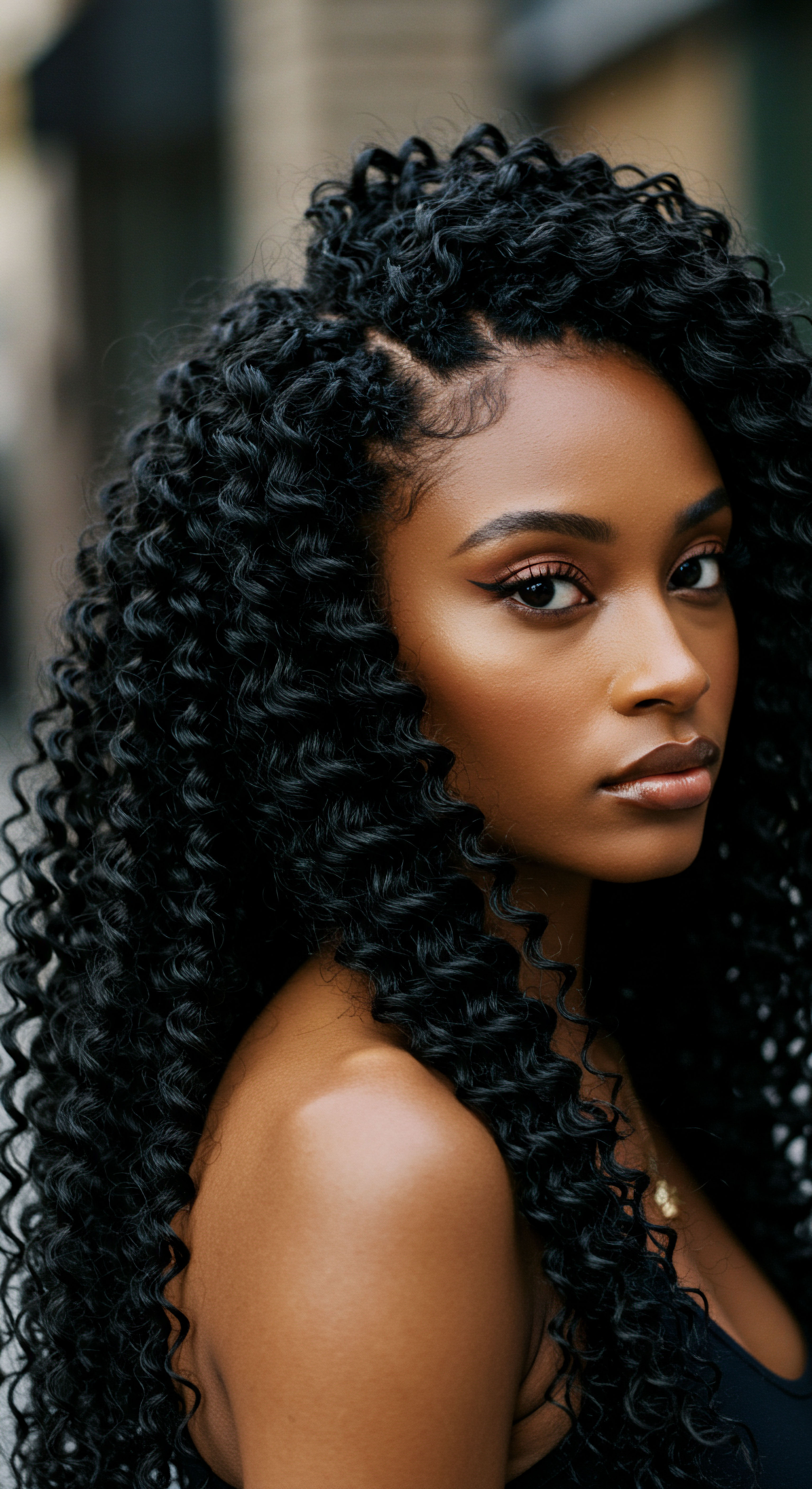
Protective Styling Encyclopedia
Protective styles serve as a shield against daily manipulation and environmental aggressors, thereby minimizing mechanical stress. These styles, which tuck away the hair ends and reduce exposure, range from braids and twists to buns and cornrows. The efficacy of a protective style is often enhanced by the products used in its creation and maintenance.
Selecting products that provide adequate slip and moisture during the styling process is paramount. A good leave-in conditioner or styling cream can make hair more pliable, reducing the force required to manipulate it into a desired shape. This gentle approach helps prevent breakage during the braiding or twisting process itself. Moreover, using a lightweight oil or serum to seal in moisture after styling can keep the hair supple and prevent dryness, which would otherwise make the strands brittle and more prone to snapping within the protective style.
- Braids ❉ Applied with a focus on tension, not tightness, to prevent stress on the scalp and hair roots.
- Twists ❉ Offer versatility and can be softer on the hair than some braid styles, especially when moisturized.
- Buns ❉ A simple method to keep ends protected, particularly when secured with soft, non-damaging ties.

Natural Styling and Definition Techniques
Defining natural curl patterns without inducing undue stress requires a thoughtful selection of products. Techniques like wash-and-gos, finger coiling, or shingling aim to enhance the hair’s inherent shape. The products chosen for these methods play a direct role in how much mechanical force is applied during the process.
For instance, a defining gel or cream with excellent slip allows for easier distribution through the hair, reducing friction as one separates and defines individual curls. Products containing humectants help draw moisture from the air, maintaining the hair’s pliability and preventing it from drying out and becoming stiff, which could lead to breakage with movement. The objective is to encourage curl clumping and definition with minimal physical manipulation, allowing the hair to settle into its natural pattern with grace.
Thoughtful product selection transforms daily hair rituals into protective practices, minimizing mechanical stress and preserving strand resilience.

Wigs and Hair Extensions Mastery
While wigs and extensions offer styling versatility and can provide a break from daily manipulation of one’s natural hair, their application and removal present potential sources of mechanical stress. The preparation of natural hair beneath these additions is critical. Products that cleanse gently and condition deeply help maintain the underlying hair’s integrity.
When securing extensions, whether through braids, weaves, or other attachment methods, the tension applied must be carefully calibrated. Using a scalp oil or light serum on the natural hair before installation can reduce friction and discomfort. For wig wearers, ensuring the natural hair is adequately moisturized and protected beneath a wig cap is significant. Products that condition and provide a smooth surface for the wig cap can prevent friction and rubbing, which could otherwise cause damage to the hair shaft.
| Area Natural Hair Preparation |
| Product Role Gentle cleansers, deep conditioners |
| Stress Mitigation Maintains strength, prevents dryness |
| Area Installation |
| Product Role Light oils, leave-in conditioners |
| Stress Mitigation Reduces friction, eases manipulation |
| Area Under-Wig Care |
| Product Role Moisturizing sprays, scalp serums |
| Stress Mitigation Minimizes rubbing, nourishes scalp |
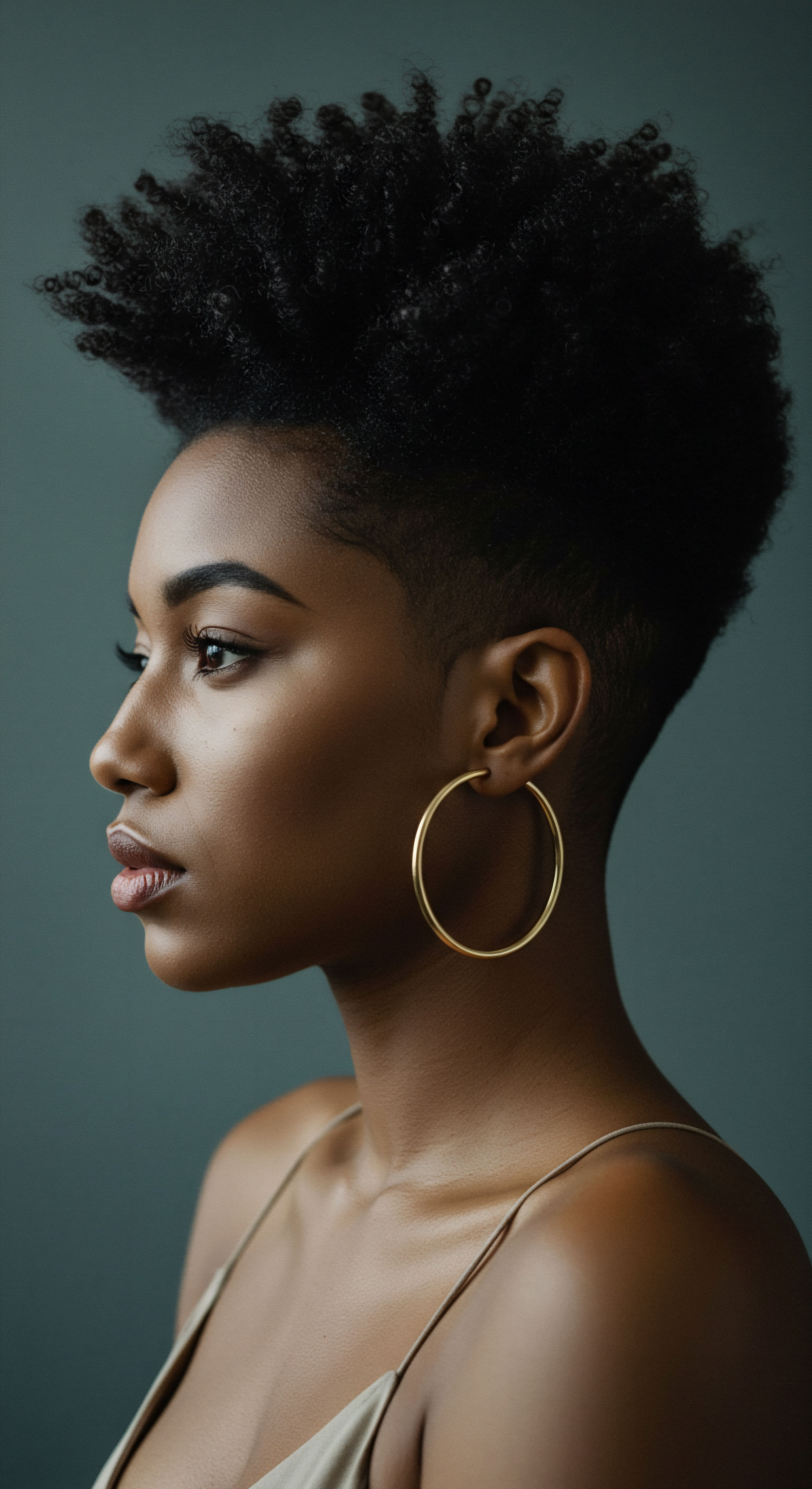
Heat Styling and Thermal Reconditioning Safety First Approach
The application of heat, whether from blow dryers, flat irons, or curling wands, is a considerable source of mechanical stress for any hair type, and particularly for textured strands. Heat can compromise the hair’s protein structure, leading to dryness, brittleness, and increased susceptibility to breakage.
Product choices become a vital line of defense here. A high-quality Heat Protectant spray forms a barrier on the hair shaft, distributing heat more evenly and reducing direct thermal impact. These products often contain silicones or other film-forming polymers that can withstand high temperatures. Furthermore, selecting styling tools with adjustable heat settings and using the lowest effective temperature is always advised.
Following heat styling with moisturizing serums or oils can help replenish any lost hydration and restore flexibility to the hair. The goal is to achieve the desired style while safeguarding the hair’s internal and external structure from the harsh effects of thermal energy.
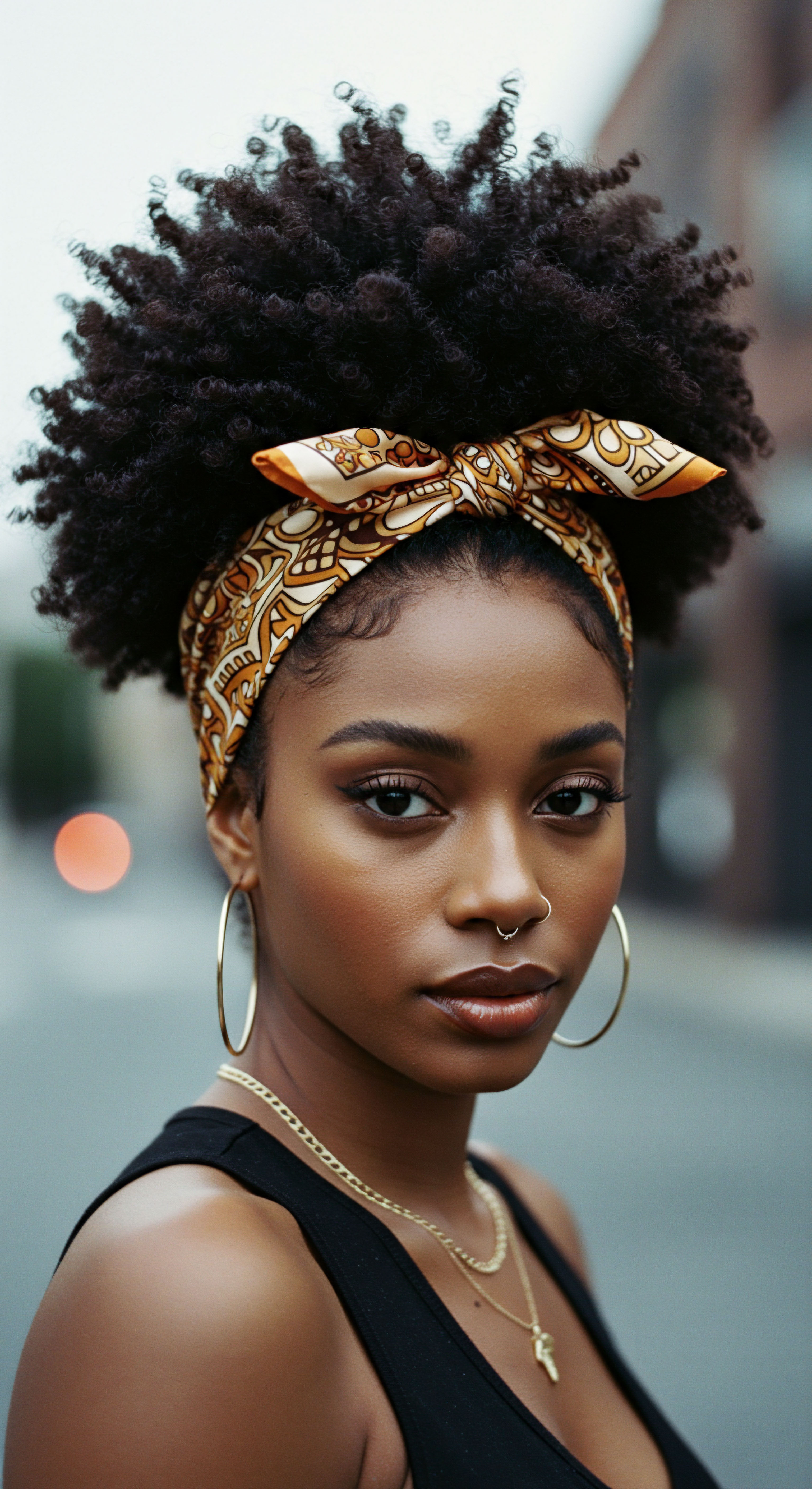
The Complete Textured Hair Toolkit
The implements we use on our hair are as important as the products themselves in minimizing mechanical stress. The right tools, combined with appropriate formulations, create a synergy that supports hair health.
- Wide-Tooth Combs ❉ These are preferred for detangling textured hair, especially when wet and coated with conditioner. The wider spacing between teeth reduces snagging and pulling, distributing tension more evenly across the strands.
- Denman Brushes or Flexi Brushes ❉ When used with a gentle hand and plenty of slip, these brushes can help define curls and smooth the hair without excessive pulling.
- Microfiber Towels or Cotton T-Shirts ❉ Unlike traditional terrycloth towels, which can create friction and frizz, these softer materials absorb excess water without roughing up the cuticle, thereby reducing mechanical abrasion during drying.
The thoughtful pairing of products and tools, such as a rich detangling conditioner with a wide-tooth comb, significantly diminishes the mechanical forces experienced by textured hair during daily care. This deliberate approach transforms potentially damaging routines into opportunities for preservation and vitality.
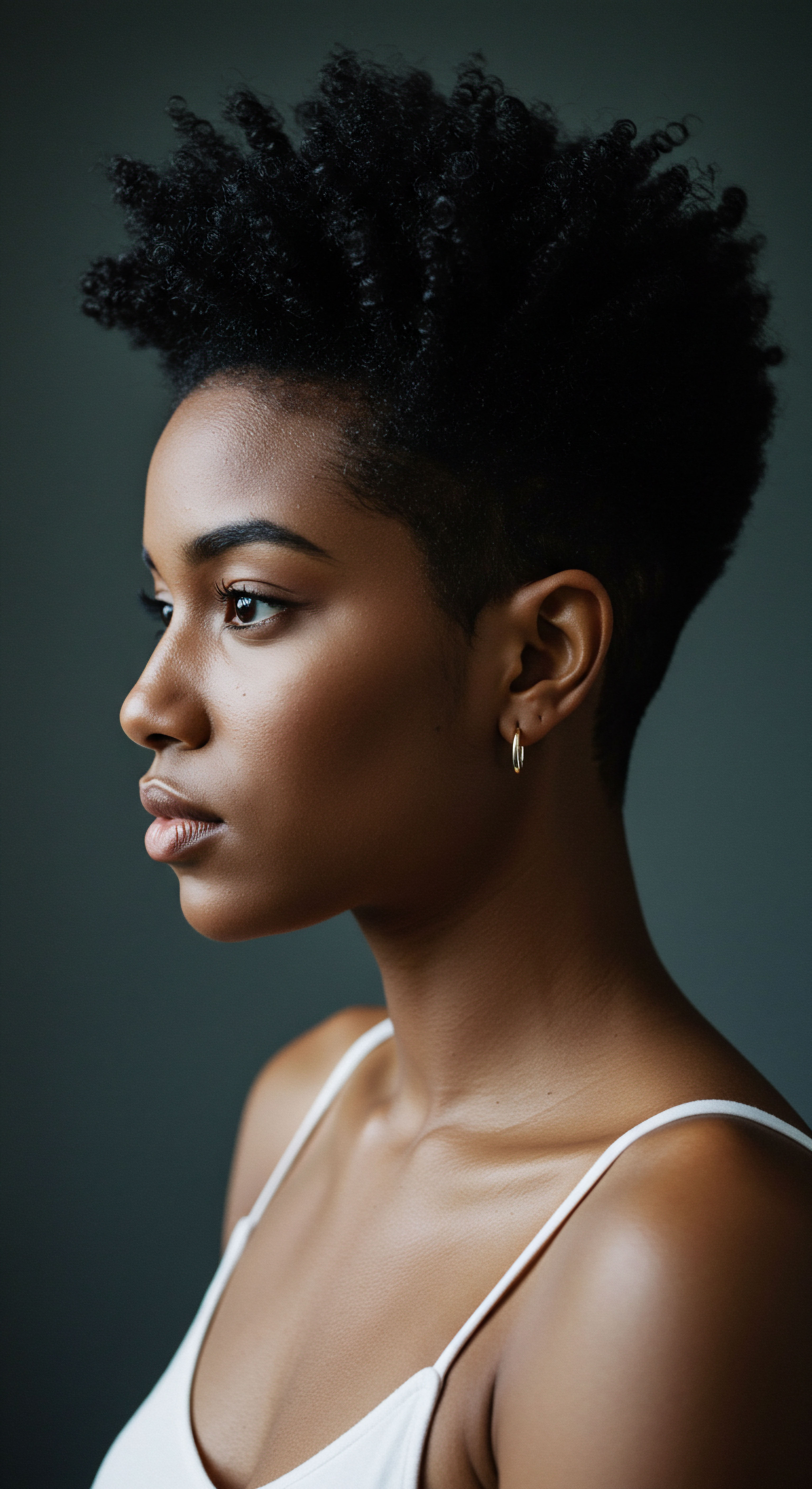
Relay
To consider the resilience of textured hair is to look beyond the surface, to the profound interplay of its biological architecture, the legacy of cultural practices, and the cutting-edge of cosmetic science. The question of whether product choices truly reduce mechanical stress on textured hair beckons us into a deeper discourse, one that transcends simple answers and embraces the layered complexities of hair as both a scientific marvel and a cultural touchstone. Here, we peel back the layers, seeking not just solutions, but a comprehensive grasp of the forces at play.
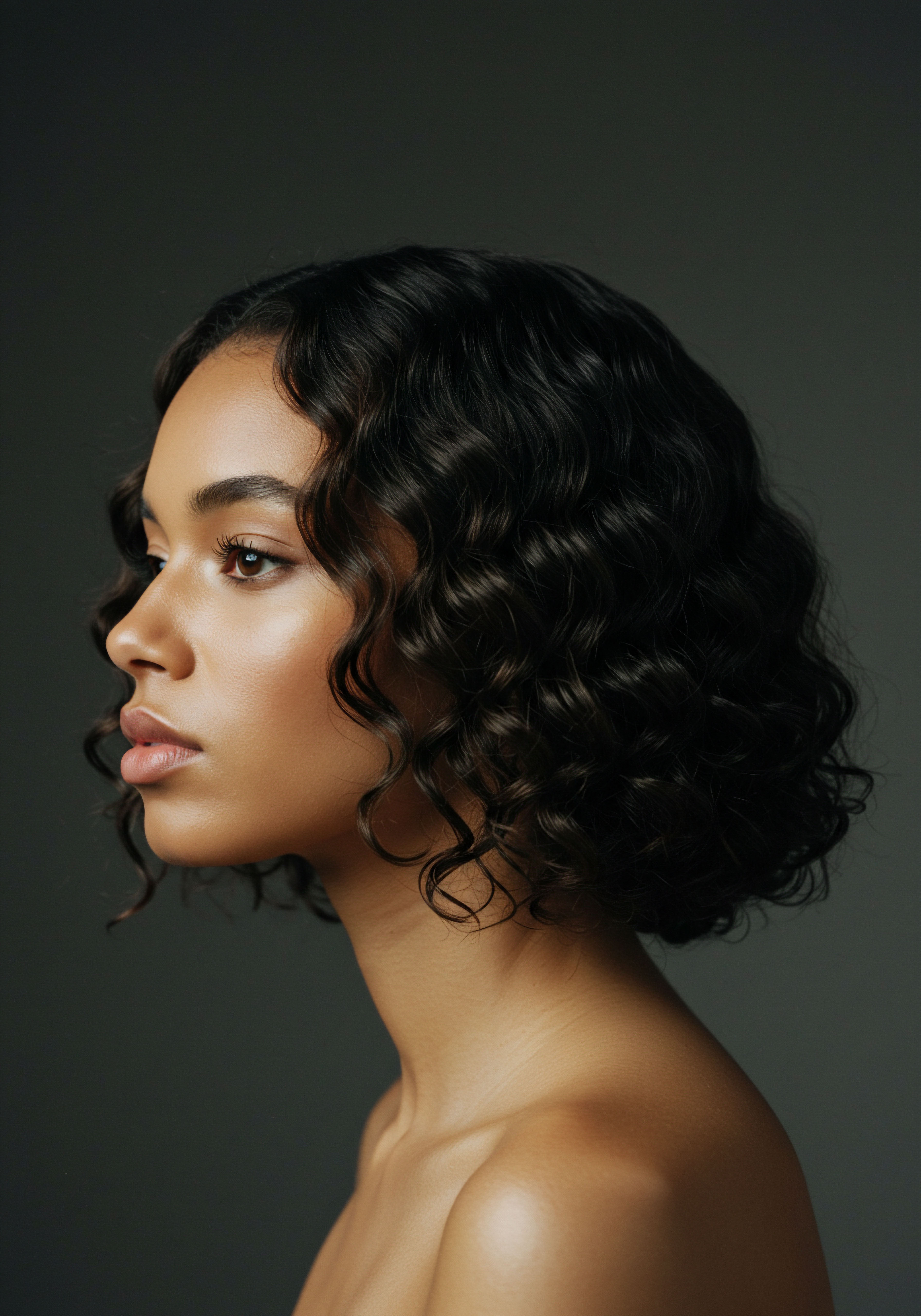
How Do Hair Products Fortify Internal Fiber Structure?
The ability of a product to reduce mechanical stress extends beyond merely lubricating the surface. For textured hair, which possesses a unique morphology rendering it more susceptible to internal fracturing during everyday manipulation, formulations that strengthen the hair from within are paramount. This internal fortification hinges on specific ingredients that can penetrate the hair cortex, the central region responsible for the hair’s strength and elasticity.
One area of significant scientific inquiry concerns Hydrolyzed Proteins. These are proteins that have been broken down into smaller peptides or amino acids, allowing them to pass through the cuticle and integrate into the cortex. Research has demonstrated that hydrolyzed keratin, for instance, can deposit on the hair cuticles and partially penetrate into the hair cortex. This penetration contributes to improving the tensile properties of hair.
A study showed that for hydrolyzed-keratin-treated hair, tensile strength was maintained after UV radiation, while for untreated hair, it decreased by 14.32%. This suggests a capacity for these smaller protein fragments to reinforce the hair’s internal bonds, thereby increasing its resistance to mechanical strain.
Beyond proteins, certain Cationic Polymers play a dual role. While primarily known for their surface-smoothing properties, which reduce friction and static, some can also influence the hair’s internal structure. These positively charged molecules are attracted to the negatively charged surface of damaged hair, forming a film that flattens the cuticle.
This film reduces friction, making detangling easier and decreasing the mechanical force applied during combing. Furthermore, studies indicate that cationic formulations can affect cortex porosity, with some formulations decreasing it, which suggests an impact on the hair’s internal integrity.
Consider the subtle yet significant impact of a polymer like Polyquaternium-10. This cationic cellulose-derived conditioning polymer is often found in products for damaged and fragile hair, including Afro-American hair. It assists in detangling and significantly improves mechanical strength. This chemical intervention provides a tangible benefit, directly addressing the intrinsic vulnerability of textured hair to external forces.

What Role Do Historical Practices Play in Modern Product Development?
The science of hair care, while seemingly modern, stands on the shoulders of ancient wisdom. Across diverse cultures, hair has held deep personal and communal significance, leading to practices and ingredient discoveries that centuries later still inform our understanding of hair health. This cultural lineage offers a compelling lens through which to view modern product development.
Ancient civilizations, from India with its Ayurvedic traditions to Egypt and various African communities, intuitively grasped the protective qualities of natural oils and plant extracts. Coconut oil, widely used in Ayurvedic practices, has been scientifically shown to prevent protein loss and reduce hair damage due to its high lauric acid content. Similarly, olive oil, cherished in ancient Mediterranean cultures, nourishes the scalp and improves hair elasticity, reducing breakage. These historical practices, rooted in observation and generations of experiential knowledge, highlight the enduring value of certain ingredients for hair strength and resilience.
The scientific validation of ancient hair care practices, particularly the use of natural oils, underscores their enduring relevance in reducing mechanical stress on textured hair.
The wisdom embedded in these traditions suggests a holistic approach to hair care, one that recognizes the interplay between external application and internal well-being. Modern formulations that incorporate plant-derived proteins, botanical extracts, and natural oils are, in essence, echoing these ancestral practices, albeit with the added precision of contemporary chemical understanding. The shift towards “cleaner” beauty and a greater appreciation for ingredients derived from nature is, in many ways, a return to these foundational principles. This historical continuity underscores that effective solutions for reducing mechanical stress on textured hair are not always entirely novel, but often refined iterations of long-held cultural practices.

How Do Product Formulations Reduce External Friction and Tangles?
Mechanical stress often originates from the external forces applied during detangling, combing, and styling. The unique coiling of textured hair means individual strands readily intertwine, forming knots that require significant force to separate, leading to breakage. Product formulations address this by modifying the hair’s surface properties, primarily by reducing friction.
Cationic Surfactants and Polymers are at the forefront of this effort. These ingredients carry a positive charge that is attracted to the naturally negatively charged surface of hair, especially damaged hair. When deposited on the hair, they create a smooth, lubricating film.
This film effectively flattens the raised cuticle scales, decreasing the coefficient of friction between individual hair strands and between hair and styling tools. The result is significantly reduced resistance during combing, thereby minimizing the force required to detangle.
For instance, a study on hair breakage during combing noted that “Accumulated data from conditioned versus shampooed hair, bleached versus unbleached hair, and comb stroke length comparing broken hairs versus combing loads shows that hair breakage increases with combing forces.” It further stated, “This is why hair conditioners are so effective in reducing combing forces and breakage for Caucasian type hair, and in that manner hair conditioners make hair more resistant to grooming actions, i.e. stronger.” While this particular snippet refers to Caucasian hair, the underlying principle of friction reduction applies universally to hair types, and its importance is amplified for textured hair which experiences higher combing forces due to its structure.
Silicones are another class of polymers widely used for their friction-reducing capabilities. They deposit onto the hair surface, providing slip, gloss, and reducing static charge, all of which contribute to easier detangling and less mechanical stress. The choice of silicone, whether lighter and more volatile or heavier and film-forming, can be tailored to provide varying degrees of conditioning and slip without excessive buildup.
| Ingredient Class Cationic Polymers |
| Mechanism of Action Electrostatic attraction to hair, forms smoothing film. |
| Benefit for Textured Hair Reduces friction, eases detangling, neutralizes static. |
| Ingredient Class Hydrolyzed Proteins |
| Mechanism of Action Penetrates cortex, strengthens internal structure. |
| Benefit for Textured Hair Increases tensile strength, fortifies against breakage. |
| Ingredient Class Natural Oils |
| Mechanism of Action Lubricates surface, provides moisture, reduces protein loss. |
| Benefit for Textured Hair Improves slip, maintains pliability, seals cuticle. |
| Ingredient Class Silicones |
| Mechanism of Action Forms surface film, reduces inter-fiber friction. |
| Benefit for Textured Hair Enhances slip, adds gloss, minimizes static. |
The efficacy of these ingredients is particularly critical for textured hair, which is statistically more prone to breakage. Research shows that Afro-textured hair breaks roughly ten times faster than straighter Caucasian hair across the range of shear stresses experienced during combing or brushing. This stark difference highlights the urgent need for products that actively mitigate these forces. By selecting products that coat the hair, reduce friction, and potentially reinforce the internal structure, individuals can significantly lower the mechanical strain their textured hair endures daily.

Reflection
The exploration of how product choices might genuinely lessen mechanical stress on textured hair reveals a complex, yet profoundly rewarding, landscape. It is a dialogue between the hair’s inherent characteristics and the mindful application of science, tradition, and personal care. The answers are not singular, but rather a chorus of understanding, inviting us to view our hair not as a challenge to be overcome, but as a unique expression to be honored and tended with informed gentleness. This journey toward deeper comprehension ultimately cultivates a more serene and resilient relationship with our strands, celebrating their strength and beauty in every curl and coil.

References
- 1. Defying Damage ❉ Understanding Breakage in Afro-textured Hair. Cosmetics & Toiletries, 2020.
- 2. Performance and Mechanism of Hydrolyzed Keratin for Hair Photoaging Prevention. MDPI, 2025.
- 3. Rediscovering Historical Hair Care Practices. Fabulive, 2023.
- 4. Polymers in Hair-Care Products. NaturallyCurly, 2005.
- 5. The Fundamentals Of Polymers In Hair Products. The Mestiza Muse, 2023.
- 6. Cationic Conditioner Polyquaternium-7 For Hair. Guangzhou Shengqing Materials Co. Ltd. 2025.
- 7. HYDROLIZED KERATIN. Ataman Kimya.
- 8. The Legacy of Lathers ❉ Tracing the Historical Use of Natural Ingredients. 2023.
- 9. Performance and Mechanism of Hydrolyzed Keratin for Hair Photoaging Prevention. Preprints.org, 2025.
- 10. A Cultural History of Hair in Antiquity. DigitalCommons@Fairfield.
- 11. On Hair Care Physicochemistry ❉ From Structure and Degradation to Novel Biobased Conditioning Agents. PubMed Central.
- 12. All-day hair manageability for textured hair types ❉ A revision of the current anti-frizz technologies and suggestions for the future. Chalmers ODR.
- 13. Penetration of different molecular weight hydrolysed keratins into hair fibres and their effects on the physical properties of textured hair.
- 14. Proteins as Hair Styling Agents. ResearchGate, 2025.
- 15. Cationic Compounds in Cosmetics. Science-y Hair Blog, 2011.
- 16. Hair Care. Smithsonian Institution.
- 17. Interactions of cationic formulations on human hair ❉ Effects on cuticle texture and cortex porosity. ECI Digital Archives.
- 18. Trichological Dangers of Being Black. Root Cause Clinical, 2023.
- 19. The Use of Cationizing Reagents in the Preparation of Conditioning Polymers for Hair and Skin Care.
- 20. Penetration of different molecular weight hydrolyzed keratins into hair fibers and their effects on the physical properties of textured hair. ResearchGate, 2024.
- 21. The physics of curly hair. MIT Department of Mechanical Engineering, 2014.
- 22. Does brushing untangled hair actually damage it? r/HaircareScience – Reddit, 2022.
- 23. Encyclopedia of Hair ❉ A Cultural History. ResearchGate.
- 24. What is the Hair Cuticle? Structure, Causes of Damage & Repair Tips. Laifen-EU, 2024.
- 25. Top Benefits of Protein Treatment for Natural Hair. ISON Beauty, 2024.
- 26. Grades of cuticle layer damage assessed by TEM. ResearchGate.
- 27. Hair breakage during combing. IV. Brushing and combing hair. Request PDF, 2024.
- 28. Advancements in polymers used in hair care a review. ResearchGate, 2016.
- 29. Understanding Curly Hair Mechanics ❉ Fiber Strength. PubMed.
- 30. Science Behind Protein Hair Treatments ❉ Are They Worth It? Needs Hair Studio, 2025.
- 31. Proteins as Hair Styling Agents. MDPI, 2021.
- 32. A Review of Hair Care Products for Black Individuals.
- 33. Why Should I Care About Hair? The Mechanics Behind Curly Hair. Notre Dame Sites, 2022.
- 34. Advocating Curls ❉ Optimizing Textured Hair Product Preservation. Cosmetics & Toiletries, 2021.
- 35. Innovations in Hair Care. Happi, 2007.
- 36. Porosity and Resistance of Textured Hair ❉ Assessing Chemical and Physical Damage Under Consumer-Relevant Conditions. MDPI.
- 37. Chemistry of Wellness ❉ Hair and Hair Care.
- 38. Understanding Curly Hair Mechanics ❉ Fiber Strength. ResearchGate, 2024.
- 39. Hair breakage during combing. II. Impact loading and hair breakage. ResearchGate, 2024.
- 40. Does brushing in either wet hair or dry hair cause breakage? r/HaircareScience – Reddit, 2025.
- 41. Hair Breakage in Patients of African Descent ❉ Role of Dermoscopy. PMC – PubMed Central.
- 42. Reimagining Hair Science ❉ A New Approach to Classify Curly Hair Phenotypes via New Quantitative Geometric and Structural Mechanical Parameters. PubMed, 2023.
- 43. Hair Pores Caused by Surfactants via the Cell Membrane Complex and a Prevention Strategy through the Use of Cuticle Sealing. ResearchGate, 2023.
- 44. Black women’s hair ❉ the main scalp dermatoses and aesthetic practices in women of African ethnicity. PMC – PubMed Central.
- 45. Physicochemical Properties of Textured Hair. ResearchGate, 2022.